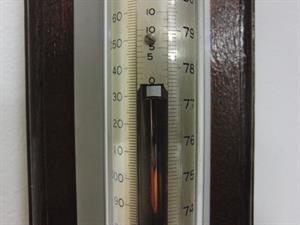
PUMPA - SMART LEARNING
எங்கள் ஆசிரியர்களுடன் 1-ஆன்-1 ஆலோசனை நேரத்தைப் பெறுங்கள். டாப்பர் ஆவதற்கு நாங்கள் பயிற்சி அளிப்போம்
Book Free Demo
Atmospheric pressure:
This atmospheric pressure is also called barometric pressure, because the barometer is the instrument used to measure the pressure. Scientists measure atmospheric pressure with the help of a mercury barometer.  Barometer
Barometer 
Atmospheric pressure is theamount of force or pressure exerted by the air surrounding us downwards upon the unit surface of the earth.
The space around us is filled with air. This layer of air surrounds the unit surface area of the earth is called the atmosphere, and it extends many kilometres from the surface of the earth. The pressure exerted by this layer of air upon the surface of the earth is called atmospheric pressure.
This atmospheric pressure is also called barometric pressure, because the barometer is the instrument used to measure the pressure. Scientists measure atmospheric pressure with the help of a mercury barometer.

Mercury barometer:
A mercury barometer is made up of a glass tube placed upside down inside a beaker filled with mercury.
Let us discuss the procedure to measure atmospheric pressure as below,
Immerse a glass tube with a closed-end in a tray of mercury and allow all the air to escape, then turn the tube upright with the opening submerged in the mercury. You will have a column of mercury inside the tube and a vacuum between the top of the column and the end of the tube. The pressure exerted by the atmosphere on the mercury in the tray supports the column, so the height of the column is a way to measure atmospheric pressure. If the tube is graduated in \(millimetres\), the height of the column will be approximately \(760\) \(mm\), depending on atmospheric conditions.

Sample set-up for mercury barometer
One atmospheric pressure:
One atmospheric pressure (\(1\) \(atm\)) is the pressure exerted by the mercury column of height \(76\) \(cm\) in the barometer. It is equal to .
The SI unit of atmospheric pressure is or \(pascal\).
Reference:
https://commons.wikimedia.org/wiki/File:MercuryBarometer.svg